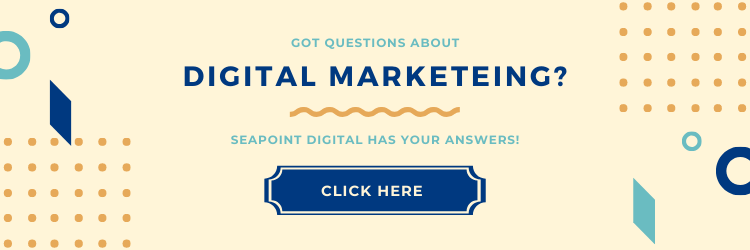Inbound marketing depends on content. But it can’t just be any content. It has to be the right content. Here are 10 ways to create awesome content to help your inbound marketing plans along.
1. Know What Content Actually Is
Before you begin creating awesome content, make sure you know what content actually is. Content is any information that’s made available for and specifically created for websites or other online distribution. This could include information in the form of text, images, videos, graphics, and logos.
In more practical terms, content is the information you share to customers to your product or services. Content is what lets you have an online marketing strategy.
2. Understand Inbound Methodology
The Inbound Methodology helps you to attract, engage and delight your visitors and customers. Here’s how:
- you attract them by helping them understand and verbalize their needs;
- you engage them by helping them identify how your product (or service) fills those needs; and
- you delight them by helping them successfully use your product or services to fill those needs.
Content is the foundation for Inbound Marketing, a marketing method that drives those who don’t know you to interact with you. Without content, there’s no Inbound Marketing. Your job is to create content that attracts, engages and delights your potential and current customers.
3. Have a Content Strategy
“Content strategy” has a buzzy sound to it, so let’s make this simple: a content strategy is a plan for managing your content. This plan helps you define:
- the purpose of your content,
- the format of your content, and
- the topic your content will cover.
You need a content strategy in order to be successful with Inbound Marketing. By referring to your strategy as you create content, you can be sure you’re creating and sharing information that will benefit your company, your brand, and your audience. One excellent way to make sure your content is always in-line with your content strategy is to hire a content creator.
4. Define the Purpose of Your Content
You should have a clear description of what your content should accomplish. For example, should your content attract more people to your website? Should it provide information? Should it help your company connect with current customers? Should it help you attract new customers?
For example, the blog you’re reading was written to provide information about the importance of having high-quality content and its relationship to Inbound Marketing. The purpose of this blog is to provide information.
If you have a defined purpose for your content before you create it, you will be able to stay focused while you create it, and you can be sure your content will accomplish its goal.
5. Determine the Best Format for Your Content
Content comes in various formats, such as blog posts, videos, e-books, podcasts, webinars, and case studies, just to name a few. Each format serves its own purpose and can attract customers in different ways, so when choosing the format for your content, keep in mind your purpose and your audience.
For example, if the purpose of your content is to provide an explanation, you have a few options. An infographic can provide a simple visual outline of what you want to explain. A blog post can offer details in text form. An e-book can provide a very thorough explanation that can be easily downloaded and read later. A picture may accent a main point of your content but wouldn’t really work as the main format. How can you decide what the right format for your content is?
You can think about your audience. Does your audience tend to respond better to images or text? Are they heavy social media users or do they prefer web surfing? What type of device do they often use to access your content?
Creating buyer personas will help you get an idea of what type of content would be best suited for your audience. You know your customers best, so you will understand how they approach content and the ways they prefer to interact with it.
6. Establish Your Content’s Topic
Coming up with a topic seems like it would be the hard part, but if you have the right tools, it isn’t. You’ve already set up two of the best tools possible – your content strategy and your buyer personas – so referring back to them is important here.
Remembering your content strategy and buyer personas will help you craft content that is unique and specific, tailored just for your audience. From there, the topics will start to flow.

7. Have Content for Each Stage of the Buyer’s Journey
There are three stages to the buyer’s journey: awareness, consideration and decision, and each requires different formats of content. For instance, a customer in the decision phase would respond better to a competitive analysis, whereas a potential customer in the awareness phase may prefer an education piece or an e-book.
Each phase of the buyer’s journey should have different purposes, formats and topics. Determine those and create content around them in order to ensure all your visitors are seeing the content relevant to them.
8. Promote Your Content Through the Right Channels
Whether your piece is a blog post, a webinar, or an e-book, promotion is key in order to draw visitors and customers to your website.
You want each piece of content to get the most use possible. In order to do this, you must promote it. Use what you know about your customers and what you know about how your customers use social media. Then you can determine the best ways to promote your content to the people that matter.
9. Set SMART Goals
What determines how successful your content is? Your goals do. Your goals should be SMART: specific, measurable, attainable, relevant, and time bound.
You might shoot for an X% increase in site visits by next month. You might hope for a certain number of e-book downloads within the first two weeks. Maybe you’d like a higher number of social media shares as compared to a previous period. Whatever goal you want your content to reach, keep checking the data to see if your content is on the right track. If not, make the appropriate adjustments.
Only you can determine what your magic number will be, so create and promote your content in such a way that you can attain your goal.
10. Repeat
The process of Inbound Marketing and content creation isn’t a one-time deal. You have to continue to share content that will attract your customers and help you meet your company’s goals. It’s important to repeat these steps for each piece of content. This creates a cohesive Inbound Marketing strategy and attracts more customers to your site.
Remember, content is the foundation of Inbound Marketing. It takes effort to the right content that reaches the right people, but this effort will pay off as you get more leads, conversions, and customers than ever before.

